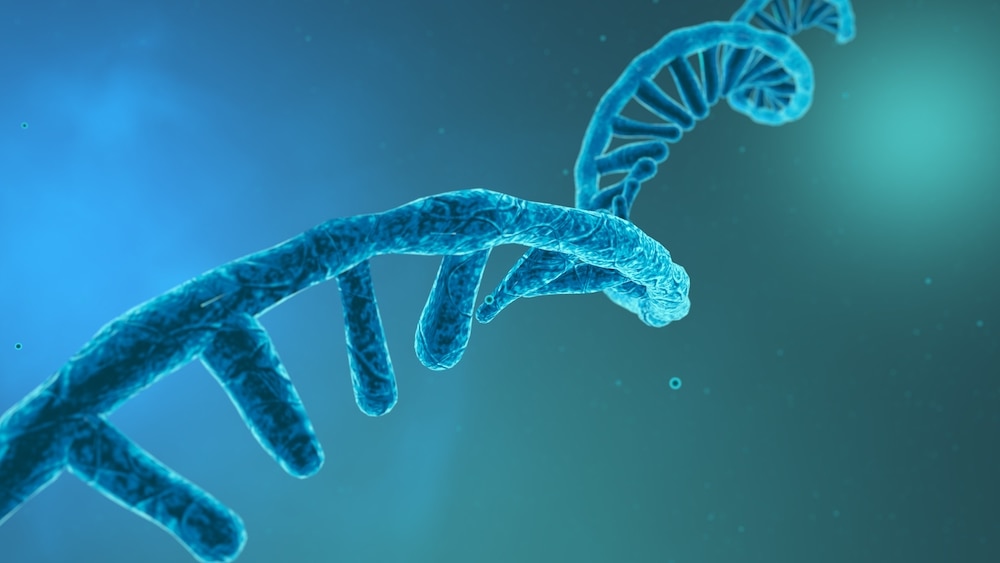Create a free profile to get unlimited access to exclusive videos, sweepstakes, and more!
Viruses body-snatch cells by shapeshifting like it's a micro horror movie
Body snatchers really do exist, in the form of viruses that can shapeshift their RNA to invade victim cells.

Shapeshifters are often the stars of sci-fi horror movies, but they are also lurking out there where you can’t even see them.
Imagine your body taken over by a virus. This monster has the supernatural ability to change the shape of its RNA structures to look like proteins in your own cells, which won’t be able to tell the difference when it infects you. Then you end up covered in green and yellow blotches as your fingers and toes begin to wither and die. You can sigh in relief now, because the virus that can get away with this doesn’t affect humans, only plants, but it does exist.
Humans can unknowingly spread brome mosaic virus (BMV) to plants and just walk away. However, what it does on a micro level eluded scientists until cryogenic electric microscopy (cryo-EM) made it observable for the first time ever as viral RNA came to life in 3D. Researcher Jeffrey Kieft of the University of Colorado Anschutz, who coauthored a study recently published in Science, is more fascinated than grossed out by this form of body snatching.
“Many viral RNAs that hijack cellular proteins use a specific 3D structure to do this,” he told SYFY WIRE. “These RNA structures are often dynamic — some parts are moving relative to other parts — which is really important for the function of the RNA, but also hard to visualize.”
This RNA was too large and complex to be seen using any of the techniques that were usually used to observe dynamic RNAs, which explains why Kieft and his colleagues turned to cryo-EM. Advances made in this technology suggested it could possibly catch the virus in the act. Cryo-EM needs a sample of molecules that is as pure as possible (this is much trickier than it sounds). The sample is then placed in something of a micro-grid and flash-frozen in liquid ethane, so they are trapped in a layer of ice, ready to be examined by a huge electron microscope.
For cryo-EM to work, the sample needs to stay at liquid nitrogen temperatures — about -320 degrees Fahrenheit. So long as it stays in that deep freeze, the microscope can image the individual molecules millions of times. It is so hi-res that it can go so far as to see the individual atoms in a protein such as RNA (though that was not necessary for the body snatchers). The images may look more like smears than anything else until they are all averaged together. With the help of powerful computer algorithms, the molecule’s 3D structure starts to show up.
But wait. How can viral RNAs even morph to deceive host cells so they can take over?
“Transfer RNAs or tRNAs are really important for the process of making cellular proteins and interact with a lot of different biological machines in the cell,” Kieft said. “Many viruses have evolved to mimic these tRNAs so that they can access or manipulate that cellular machinery.”
Creepy. Transfer RNA helps synthesize proteins. Its function lies right between the transcription of RNA and its translation into a protein. It can take an anticodon, or a unit of genetic code that has a counterpart in messenger RNA (mRNA), and match it up to a codon, or messenger RNA unit that complements it. Shapeshifting viral RNA strands fold to warp themselves into a 3D shape that comes across as harmless tRNA to a host cell. It doesn’t even need to look exactly like the tRNA, since it has another way to bind to the protein in its victim that interacts with tRNA.
Because RNAs are needed for so many functions in a cell, and can fold themselves into 3D shapes for much less nefarious reasons, harmful viral RNA takes advantage and tries to make itself look like it belongs there. Shapeshifters like BMV may mean death for some plants, but their morphing potential can be used for future therapies and also applied to nanotechnology in some ways. More research on their transformative powers can make genetically engineering them possible.
“We need to know more about how viral RNAs form complex 3D shapes, how those shapes move, and the variety that exists,” said Kieft. “If we can understand them better, they could be the building blocks for new, rationally designed RNAs that do what we want."














